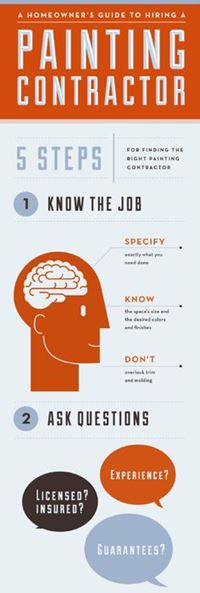Seasonal Factors To Consider For Business Outside Painting: What You Required To Know
Seasonal Factors To Consider For Business Outside Painting: What You Required To Know
Blog Article
Post Developed By-Fox Browne
When you're intending an industrial exterior paint task, seasonal aspects can make or damage your results. You'll wish to think about exactly how temperature level and moisture influence paint application and drying out times. Choosing the appropriate season can ensure your paint adheres appropriately and lasts much longer. However which periods are genuinely the most effective for this kind of work? Let's explore the crucial elements that can influence your task's success.
The Impact of Temperature Level on Paint Application
When you're intending an industrial exterior paint job, the temperature level can significantly affect how well the paint sticks and dries out.
Preferably, you want to paint when temperature levels range between 50 ° F and 85 ° F. If it's as well cold, the paint may not cure appropriately, causing problems like peeling or breaking.
On the other hand, if it's also hot, the paint can dry also rapidly, protecting against correct attachment and resulting in an irregular coating.
You must likewise consider the moment of day; morning or late afternoon uses cooler temperatures, which can be much more beneficial.
Always inspect the maker's referrals for the specific paint you're making use of, as they commonly give assistance on the perfect temperature level range for ideal outcomes.
Humidity and Its Effect on Drying Times
Temperature level isn't the only environmental variable that affects your industrial outside paint task; moisture plays a substantial duty also. High humidity levels can slow down drying times considerably, influencing the general top quality of your paint task.
When the air is saturated with dampness, the paint takes longer to cure, which can cause concerns like poor attachment and a higher threat of mold growth. If you're painting on a particularly damp day, be planned for prolonged delay times in between coats.
It's important to monitor neighborhood climate condition and strategy appropriately. Preferably, go for humidity levels in between 40% and 70% for optimal drying out.
Maintaining these consider mind guarantees your task stays on track and supplies a long lasting coating.
Best Seasons for Commercial Exterior Painting Projects
What's the most effective season for your commercial outside painting projects?
Springtime and early loss are generally your best choices. Throughout these seasons, temperatures are light, and humidity levels are frequently reduced, producing ideal conditions for paint application and drying out.
https://www.insider.com/guides/home/can-you-paint-vinyl-siding , which can create paint to dry as well rapidly, resulting in bad adhesion and finish. Likewise, winter months's cold temperature levels can hinder proper drying and curing, risking the longevity of your paint work.
Go for days with temperature levels between 50 ° F and 85 ° F for optimum results. Remember to inspect the local weather report for rainfall, as wet problems can ruin your job.
straight line painter around these variables guarantees your painting task runs smoothly and lasts much longer.
Conclusion
In conclusion, preparing your commercial external paint projects around seasonal factors to consider can make a significant difference in the end result. By organizing job throughout the optimal temperature levels and moisture levels, you'll ensure much better attachment and drying out times. Remember to keep an eye on regional weather forecasts and pick the right time of year-- spring and very early loss are your best bets. Taking these actions will help you achieve a long lasting and professional surface that lasts.
